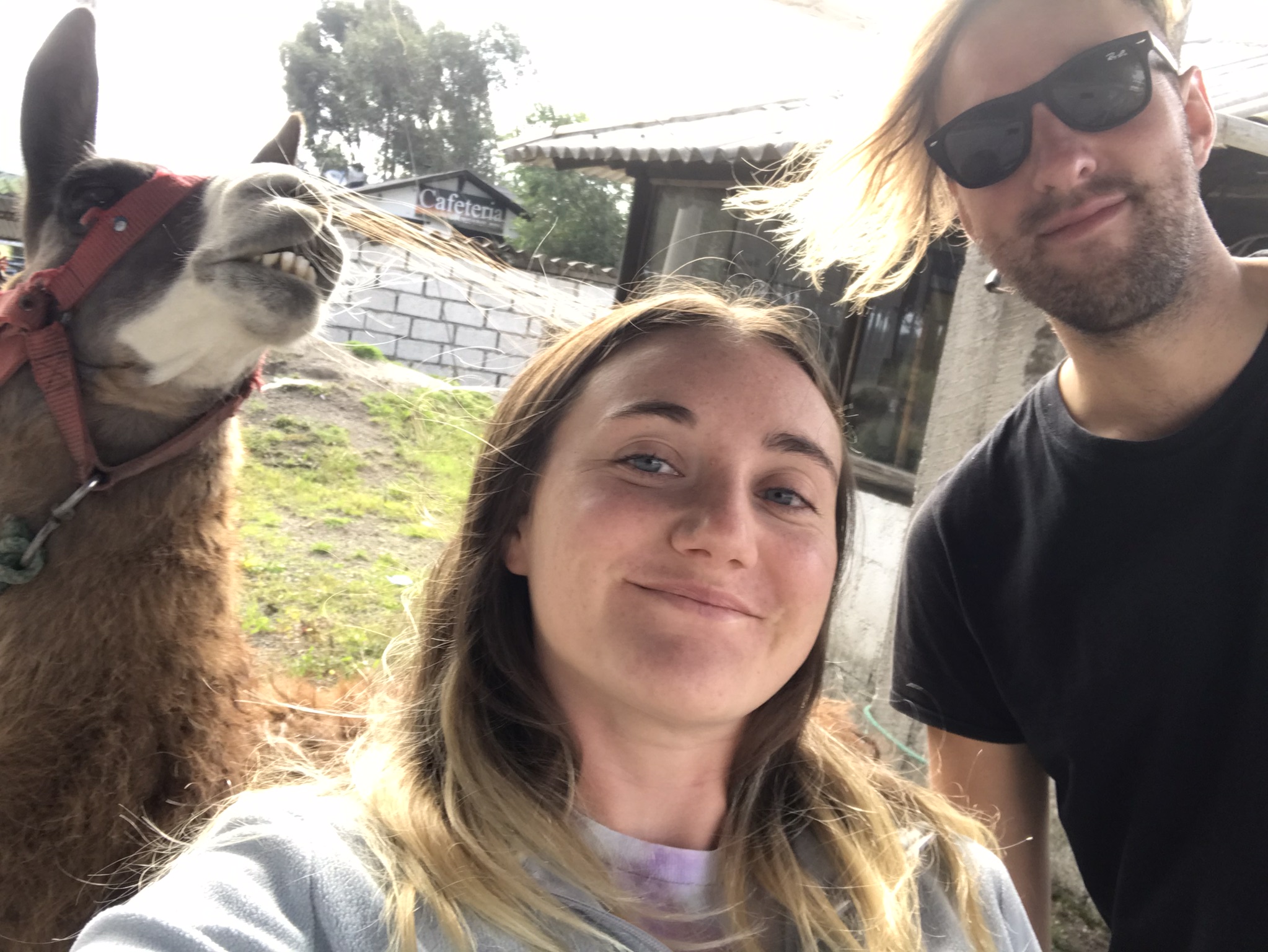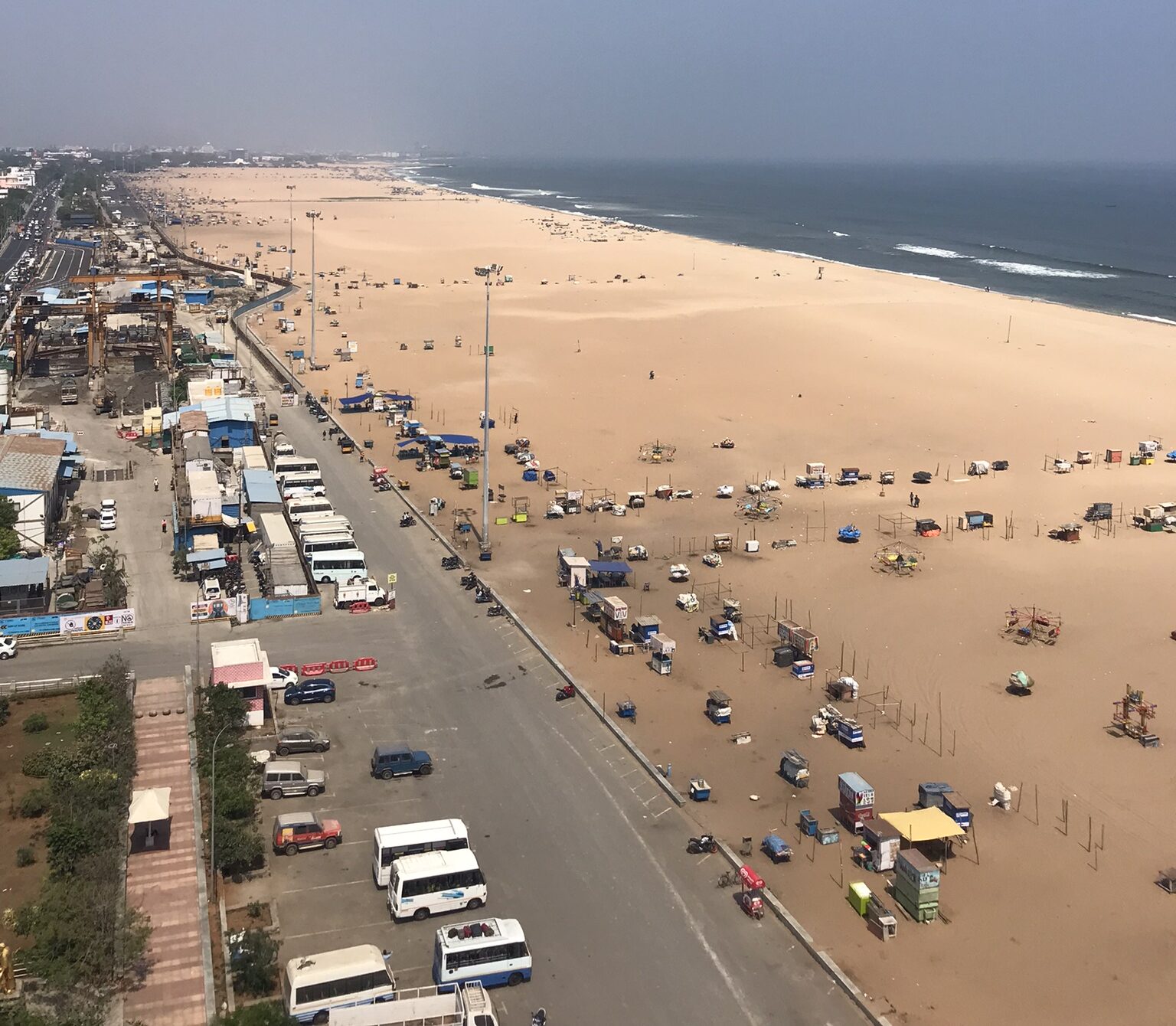Formerly known as Madras, the metropolis that is now Chennai has played a key role in India’s history and has a strong cultural and religious heritage. This self-guided walking tour takes in some of the notable sites around the seafront area. I recommend completing this walk in the morning, as temperatures can get quite hot during the day. Additionally, some of the sites may be closed in the middle of the day.
Start at Santhome Cathedral Basilica. To get there, I recommend taking the local train to Mundakakanni Amman Koil station and then walking through the historic Mylapore neighbourhood. This is one of the oldest residential neighbourhoods in the city. Look out for banana trees above or outside the doorways – these symbolise a recent marriage. From Mundakakanni Amman Koil, the walk to Santhome through Mylapore takes about 20 minutes.
Santhome Cathedral Basilica
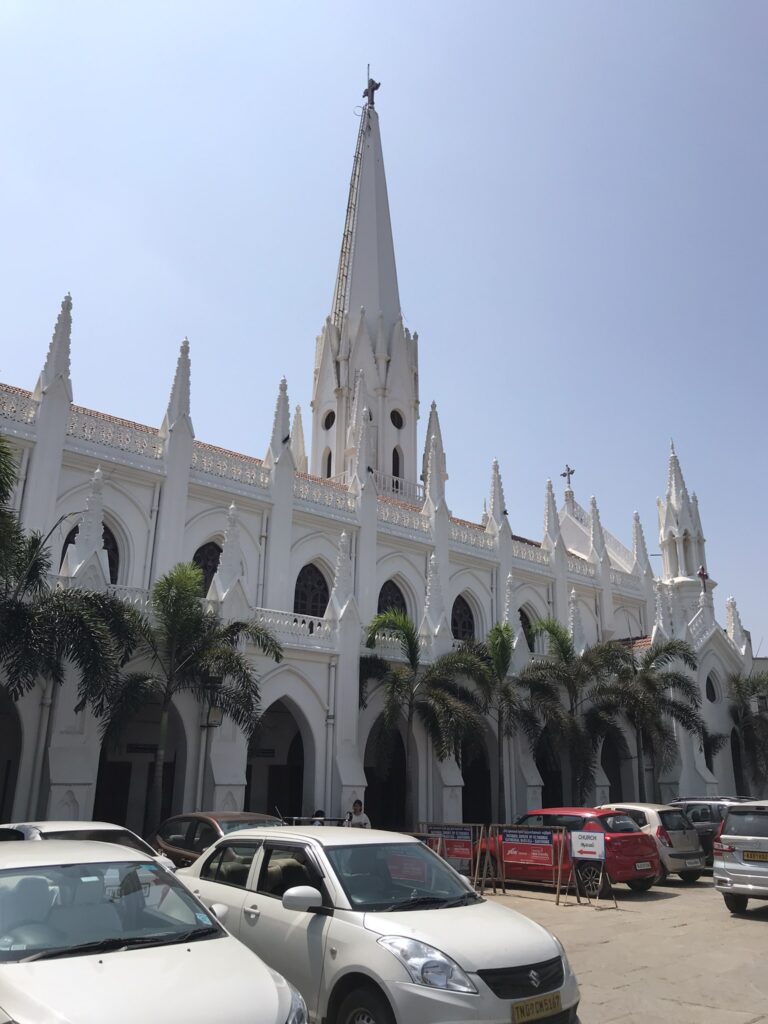
This church is said to mark the burial spot of Thomas the Apostle (commonly known as ‘Doubting Thomas’), one of the 12 disciples of Jesus. Thomas is said to have traveled to the region to spread the word of Jesus and Christianity, and died at St Thomas Mount near to this location in 72 AD after allegedly being attacked by a jealous Hindu priest. The church was originally constructed by Portuguese missionaries from Goa over the supposed burial site of Thomas and was rebuilt by the British as a large cathedral in the 1800s.
Recognised as a minor basilica by the Catholic church, this is a grand structure inside and out. Behind the church is a small museum area which features relics of Thomas and various other saints and important figures, including the head of the spear that supposedly killed Thomas. Downstairs you can visit the tomb of Thomas, although his remains were taken from India in the centuries following his death and are now located in Italy. This is the only apostle’s tomb which is located outside of Europe.
From the church, head north along Santhome High Road and you will reach Chennai Lighthouse. Constructed in 1977, this is the fourth site of the Chennai Lighthouse – the others were located on the Madras High Court buildings and in Fort St George. For a small entry fee it is possible to take the electric lift up to a viewing platform at the top of the lighthouse – here you can find fantastic panoramic views over the city and Marina Beach. There is a metal grate surrounding the viewing platform at the top to prevent people from falling over the edge – good for safety but bad for selfies. The lighthouse closes for lunch between 1pm and 3pm.
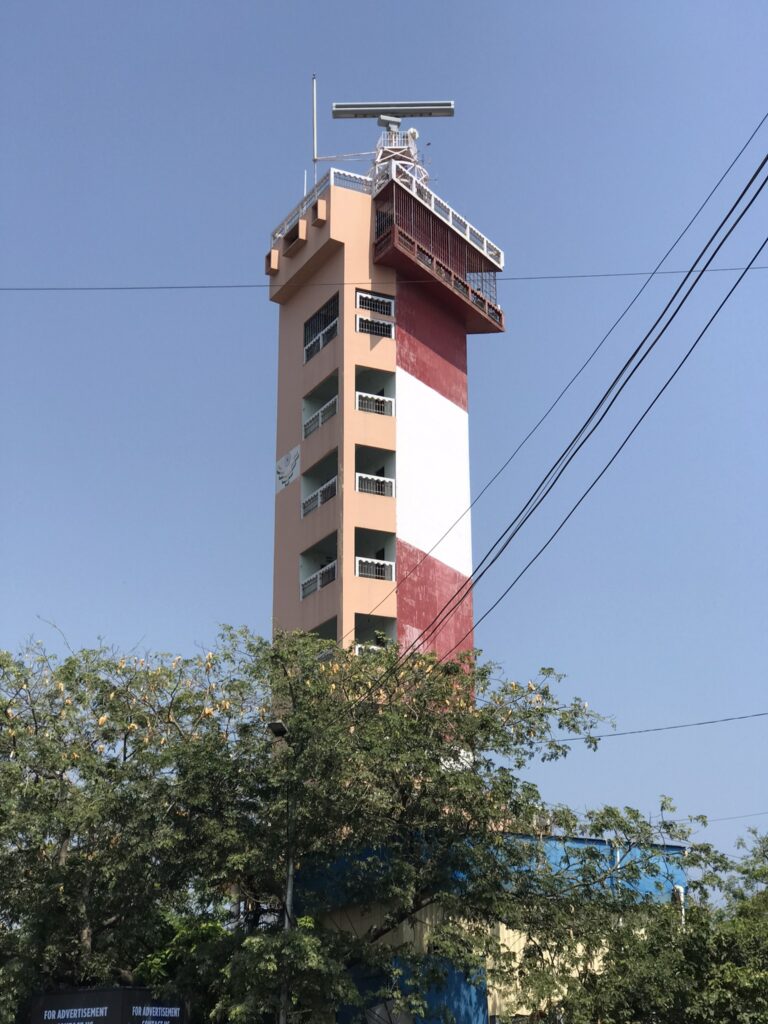
The electric lift inside is much appreciated
From the lighthouse, walk north along Marina Beach. This huge sandy beach is considered one of the largest urban beaches in the world. Swimming is not permitted due to strong currents, but that doesn’t stop large crowds from gathering at evenings and weekends. There are several landmarks along the beach, including the Mahatma Gandhi Statue which was installed shortly after independence and depicts Gandhi participating in his famous salt march.
Continue north along Marina Beach until you reach Vivekananda House. This large pink structure dating from the mid-1800s was originally an ice storage facility, the only building of its kind which remains standing in Chennai. Swami Vivekananda, a Hindu monk who is credited with popularising Yoga and Hinduism outside of India, stayed in this building in 1897.
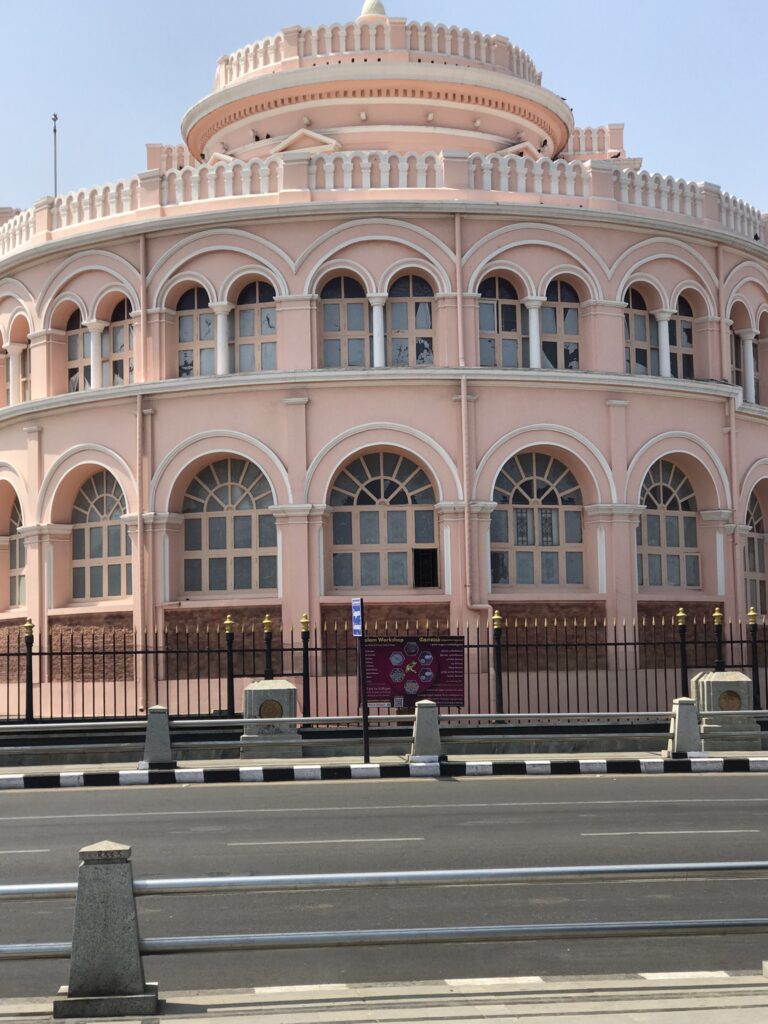
The house was originally built by the notable American ice merchant Frederic Tudor
Vivekananda is considered a national icon in India and his influence can still be felt today through the international popularity of Yoga and other concepts of Hindu spirituality, which now see thousands of Western tourists flocking to places like Varanasi and Rishikesh. The building now houses a modern museum featuring immersive exhibits on Indian culture and the life of Vivekananda. The museum is closed between 12:30 and 3pm, and also closed all day on Mondays.
From Vivekananda House, head west along Dr Besant Road and then north along TP Koil Lane 2 and you will approach Arulmigu Sri Parthasarathyswamy Temple. A fine example of colourful south Indian temple architecture, this temple is said to date back to the 7th century and the time of the Pallava dynasty. It is notable among Hindu adherents as the deity inside the temple is depicted with a moustache. The temple is closed between 12pm and 4pm each day – if you visit during these times you will be limited to looking from the outside and admiring the large water tank behind the temple.
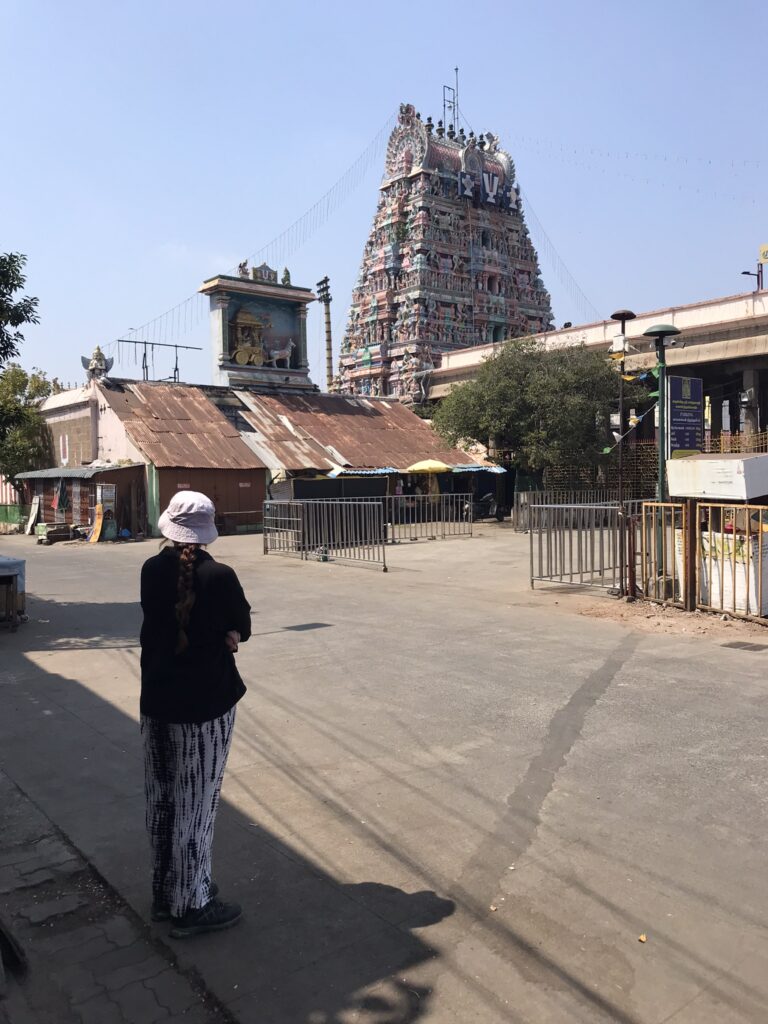
Parthasarathy Temple is a classic Dravidian-style temple dating back to the times of the Pallavas, who also constructed the famous rock temples at nearby Mahabalipuram
After the temple, you can continue to walk via Marina Beach (approx. 50 minutes) or head to nearby Tiruvallikeni station and take the local train to Chennai Fort station for Fort St George Museum. The first British fort constructed in India, this is a key site in the development of British rule in the subcontinent and therefore is a key part of the nation’s history. The museum within the Fort St George complex contains information about the development of the fort and the early days of the British presence in India, as well as a spectacular colonial painting gallery and the first Indian flag which was flown following the nation’s independence.
Head north from the fort along Beach Road and you will reach Madras High Court. Considered the second largest court complex in the world and with grand colonial buildings dating back to the 1890s, unfortunately the complex is not set up for sightseeing. It is a functioning court and is heavily guarded – visitors will need a permit. However it is possible to get a look at some of the red-coloured colonial architecture from the outside.
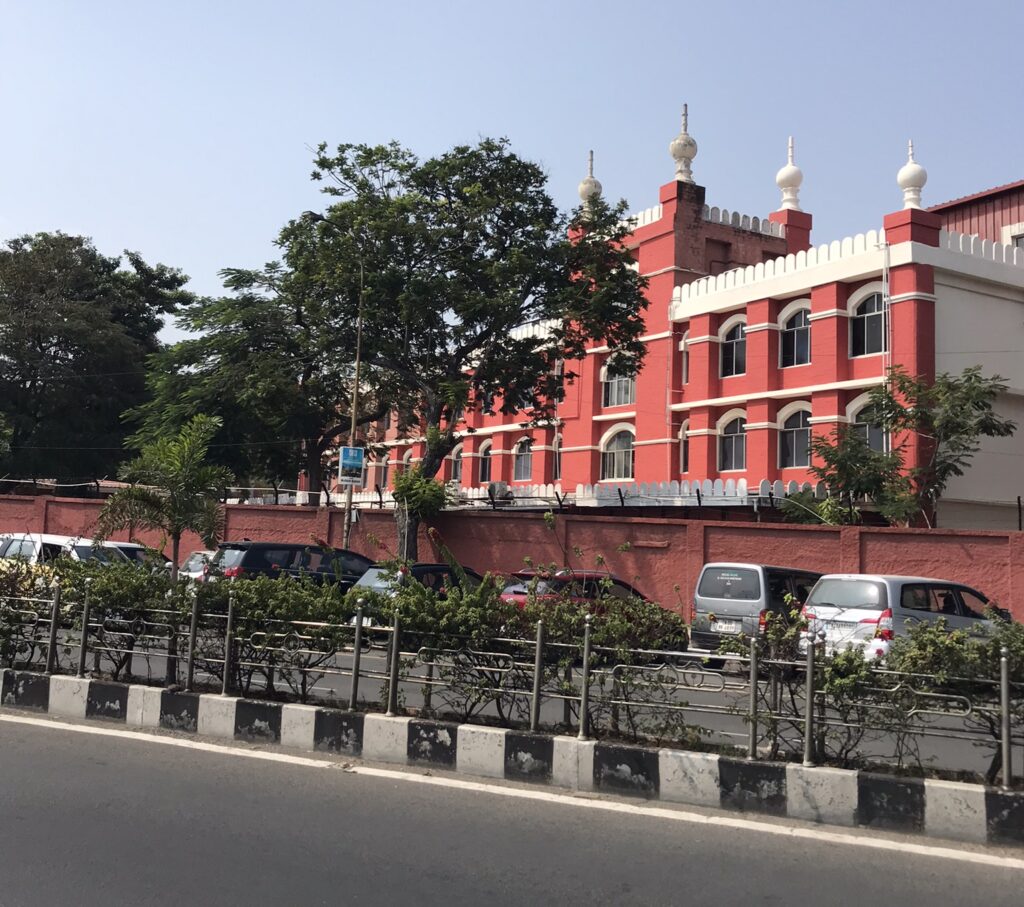
Although it’s a working court, you can still catch a glimpse of the architecture from the road while heading for the metro or train
